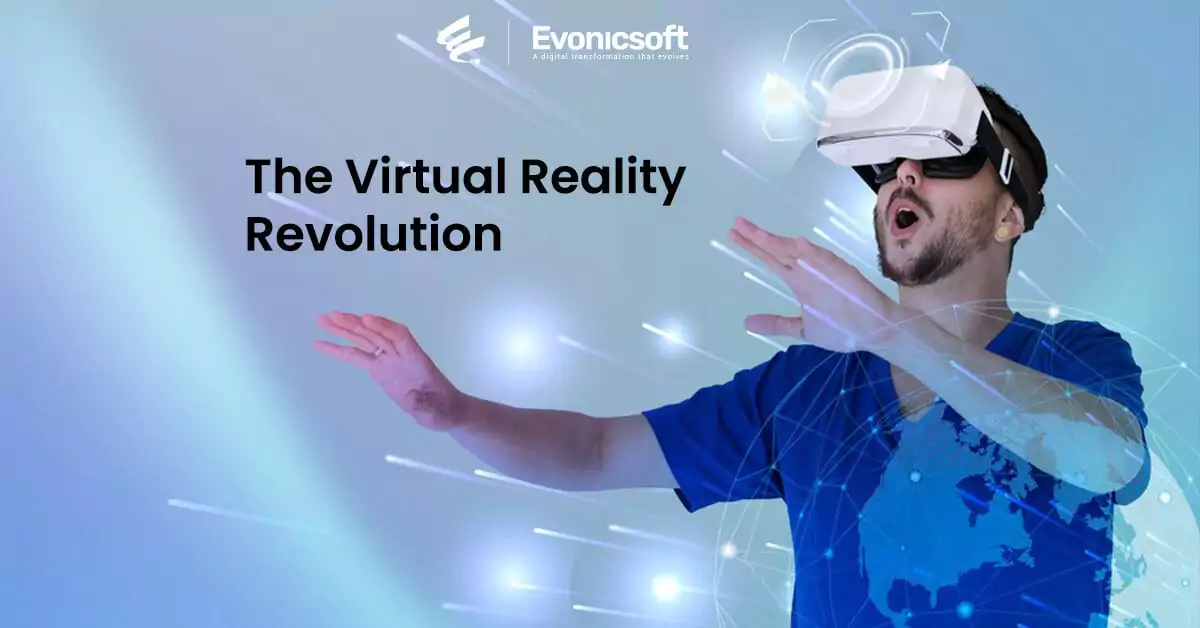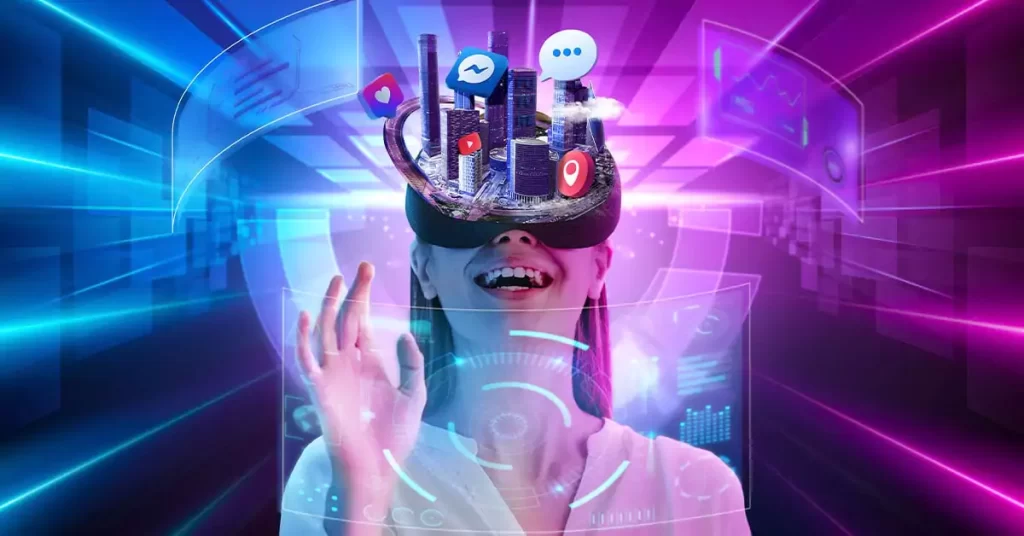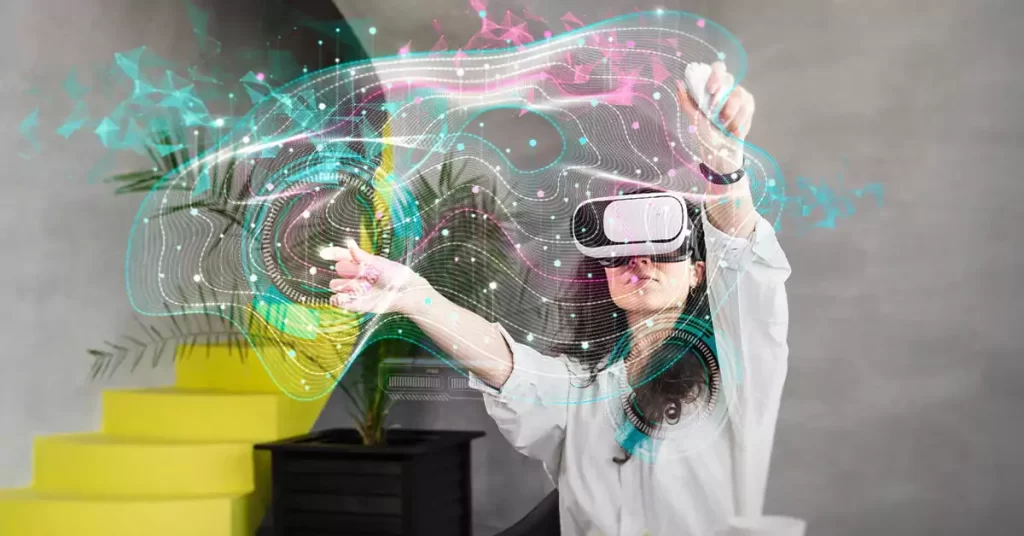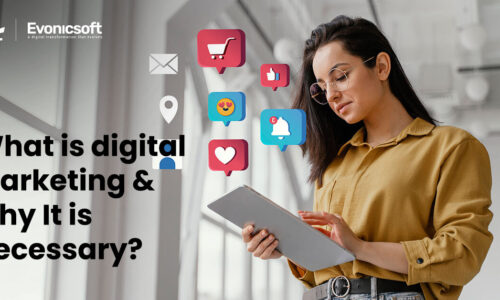
The Virtual Reality Revolution: Entering a New World
In the world of technology, few updates have generated as much excitement and prediction as virtual reality (VR). In the last ten years, virtual reality (VR) has changed from being a rare idea to something lots of people enjoy. It lets us have experiences that feel like we’re in a different world, not just the one around us. This blog explores the virtual reality revolution and its great impact on various aspects of our lives.
Find Artificial intelligence development company in Dubai.
Understanding Virtual Reality
Virtual reality, or VR for short, is a technology that crafts a pretend world. Where folks can link with computer-generated settings. Usually by wearing special headsets or goggles.
VR’s main aim is to make users believe they’ve stepped into a different place. Whether it’s entirely virtual or a highly detailed replica of the real world.
At the heart of this technology is something called “presence.” Presence means feeling like you’re actually in a different space or environment. Keeping an eye on how the user moves makes this possible. Instantly changing what they see on the screen, and giving them plain experiences like sound and touch impact.
A Brief History of Virtual Reality
The idea of virtual reality dates back several decades. Although it might appear as a recent development. We can trace the roots of VR back to the mid-20th century. Here are some key milestones in the history of virtual reality:
1. Sensorama (1950s):
Filmmaker Morton Heilig developed the Sensorama, an early attempt at great experiences. It provided virtual 3D visuals, stereo sound, vibration, and even scents.
2. The Sword of Damocles (1960s):
Computer scientist Ivan Sutherland created a head-mounted display system, often called the “Sword of Damocles” due to its large size. It was a important step toward modern VR.
3. Virtual Reality Markup Language (VRML, 1990s):
This precursor to today’s VR content formats allowed the creation of 3D worlds for the internet.
4. Oculus Rift (2012):
Palmer Luckey, one of the founders of Oculus, played a big part in getting the modern VR era. It iw when he introduced the Oculus Rift.
VR Applications and Use Cases
The virtual reality revolution has had a profound impact on various sectors, including:
1. Gaming and Entertainment
Gaming is arguably the most popular application of VR. The immersive experience of donning a VR headset and entering a virtual world has transformed the gaming industry. Games such as Beat Saber, Half-Life: Alyx, and The Elder Scrolls V: Skyrim VR. These have expanded the limits of what we can do in interactive entertainment.
2. Education and Training
Education and training are using VR. It allows students to explore historical events, visit far-off places, and conduct scientific experiments in a safe and controlled environment. Medical students, for example, can practice surgeries, and astronauts can prepare for space missions.
3. Healthcare
VR is also making waves in healthcare. It finds use in pain management, exposure therapy for treating PTSD, and even serves as a tool for physical recovery. Healthcare professionals are finding new ways to utilize VR in patient care.
4. Architecture and Design
Architects and designers use VR to create and visualize 3D models of buildings and products. This new experience helps clients and designers better understand and refine their concepts.
5. Social Interaction
Social VR platforms like Facebook Horizon and VRChat enable users to socialize, play games, and attend events in virtual spaces. These platforms bring a sense of presence and connection to online interactions.
6. Tourism
Virtual reality has the potential to change the travel industry. It allows users to explore destinations before making travel plans and can provide virtual tours of historical sites, museums, and landmarks.
7. Therapy and Wellness
VR serves therapeutic purposes, including exposure therapy for phobias, stress reduction, and meditation. It offers a controlled and immersive environment for mental health treatment.

Technological Advancements
Several technological advancements have driven the VR revolution forward:
1. Improved Hardware
Modern VR headsets like the Oculus Quest and HTC Vive Pro offer high-resolution displays, precise tracking, and comfortable designs. Wireless options have also made VR more accessible and user-friendly.
2. Content Development
The availability of high-quality content is crucial for VR’s success. Developers are creating many modern and better experiences that cater to a wide range of interests and needs.
3. Augmented Reality (AR)
Augmented reality, closely related to VR, has also seen significant advancements. AR overlays digital information onto the real world, enhancing experiences in fields such as gaming, navigation, and education.
4. 5G Connectivity
The introduction of 5G networks holds the promise of lower delays and faster data transmission. Which is crucial for VR experiences that depend on real-time data sharing.
Challenges and Concerns in Virtual Reality
Despite its fast evolution, VR faces several challenges and concerns:
1. Cost:
High-quality VR equipment can be expensive, making it less accessible to some users.
2. Motion Sickness:
Some users experience motion sickness in VR, which can be a barrier to high use.
3. Privacy:
The collection of user data in VR environments raises concerns about privacy and security.
4. Content Quality:
While the quantity of VR content is growing, the quality and depth of experiences vary.
5. Health Concerns:
Too much use of VR headsets can lead to discomfort, eye strain, and other health issues.
The Future of Virtual Reality
As technology continues to advance, the future of VR looks promising. We can expect to see:
1. Wireless and Standalone VR:
Future VR headsets will likely become more self-contained, no need for wires and external sensors.
2. Enhanced Teaming:
Advances in haptic feedback, hand tracking, and body tracking will make VR experiences better.
3. AI Integration:
Artificial intelligence can enhance realism, adapt experiences to user behavior, and enable better virtual worlds.
4. Collaboration and Communication:
VR will continue to shape the way we connect and collaborate, both personally and professionally.
5. Medical and Therapeutic Uses:
VR will play an important role in healthcare, offering innovative solutions for various medical conditions.
6. Educational Transformation:
Schools and universities will use VR for more engaging and better learning experiences.

Conclusion
The virtual reality revolution has guided us into a new dimension of technology and human experience. Thanks to its power to take us to different realities and boost our knowledge of the world. VR is reshaping how we have fun, learn, work, and recover.
As this technology keeps on progressing, we can anticipate a future in virtual reality. That is even more captivating, interactive, and open to everyone. Whether we use it for entertainment, education, or exploration, VR is here to stay and redefine our concept of reality.
Ref. https://en.wikipedia.org/wiki/Virtual_reality






